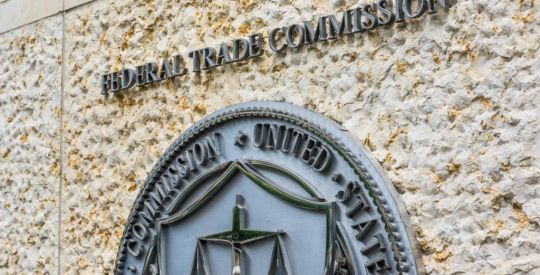
The federal Ability to Repay Rule has always been a study in contradiction. Back in 2014, the Consumer Financial Protection Bureau issued the rule to instill strict underwriting standards for mortgage loans, but also hoped not to hamper the availability of affordable home loans for creditworthy borrowers.
The rule provided a safe harbor that would promote compliance certainty, but still claimed that lenders have the flexibility to underwrite loans outside that safe harbor. The rule encouraged lenders to make Qualified Mortgages, but hoped that a safe non-QM market would develop. The CFPB predicted the eventual return of private capital to fund mortgage loans, but cemented the role of Fannie Mae and Freddie Mac.
Does the CFPB’s recent proposal to revamp QMs, issued in June, send a clearer message?
In that proposed rule, issued in late June, the CFPB continues to make one thing clear – the automatic compliance protection for GSE-eligible loans, which some call the “Patch,” should expire. The CFPB declared in 2014 that any loan eligible for purchase by a GSE constitutes a QM and is deemed to comply with the rule. Most other loans, in order to achieve that QM status, are limited to a 43% debt-to-income ratio, and the lender must follow the rule’s frustrating Appendix Q in order to establish that DTI. Although the GSE Patch may have been helpful to a mortgage market recovering from the financial crisis, the CFPB clearly does not want to extend it any longer than necessary for a “smooth and orderly transition.”
Another thing that is clear, particularly if the GSE QM Patch is eliminated, is that the general QM landscape needs tweaking. The agency has heard from some in the lending industry, consumer advocates, economists, mortgage investors and others that DTI, particularly within the confines of Appendix Q, is not a great indicator of a consumer’s ability to repay. The CFPB is proposing to eliminate the DTI threshold from the standard QM definition, and to replace it with a pricing threshold.
Specifically, a loan would not constitute a QM if its annual percentage rate exceeds the average prime offer rate by two percentage points. In adopting a rate spread threshold to distinguish QMs, the CFPB recognizes that several factors unrelated to a consumer’s ability to repay may influence a loan’s APR. However, the CFPB has found that APR is strongly correlated with that ability, and is a clear standard that is used in other contexts to distinguish loans that can be free from additional regulatory requirements. The CFPB is proposing to set the threshold at two percentage points over APOR for first-lien loans, with a higher threshold for smaller loans and subordinate-lien loans.
DTI remains a factor
While the CFPB proposes to eliminate the DTI ceiling, lenders still would have to consider DTI, or residual income, and would have to document that consideration. The proposal indicates the lender could comply by documenting that it followed its standard procedures for considering the factors in connection with a specific loan, and/or by including an underwriter worksheet or final automated underwriting system certification. However, the CFPB would not prescribe what those underwriting standards should or must be.
The CFPB also would continue to require verification of income, and is considering providing a safe harbor to creditors using specified standards, such as those required by Fannie Mae or Freddie Mac, or under one of the government insurance/guarantee programs. The proposal even asks whether the rule should allow lenders to pick and choose among those standards. The CFPB stated that those agency standards appear reasonable and would provide greater compliance certainty – particularly with respect to verifying income for self-employed consumers.
The proposal would otherwise retain many current QM elements. Loans with interest-only, negative amortization, or balloon payment features, or with points-and-fees exceeding three percent would still be excluded. The APR distinctions for loans receiving a safe harbor versus a rebuttable presumption of compliance also would remain. Accordingly, a loan that meets those restrictions on features and fees would be a safe harbor QM if its APR exceeds the APOR by less than 1.5 percentage points for first-lien transactions – so long as the lender documents its consideration of DTI or residual income, and follows agency standards for income verification.
Deadlines extended
The CFPB is rolling out this rulemaking in two related parts, with two different comment deadlines. The public has until August 10 to comment on the CFPB’s proposal to eliminate the GSE QM Patch.
That proposal would extend the Patch to apply only to loans consummated after the effective date of a final rule to tweak the general QM definition. The public then has until September 8 to comment on those general QM tweaks. After considering the public comments, the CFPB will issue a final rule, and the agency proposes a six-month delayed effective date. For planning purposes, the CFPB indicated that it does not intend for that effective date to be prior to April 1, 2021.
The CFPB will, during that time, need to resolve a potential timing gap. The proposals rely on the same effective date, but while the Patch expiration would apply to loans consummated on and after that date, the QM changes would apply to loans for which the application is received on and after that date. For a loan application received before that date, the new QM tweaks would not yet be available; if that loan is then consummated after that date, the patch would no longer be available. Accordingly, the CFPB may need to plan for some overlap.
In addition, the CFPB reports that it is still considering whether to adopt a seasoning standard, by which a loan achieves QM status after-the-fact if the borrower actually makes payments for a period of time. While that seems like a common-sense approach (by making payments, the borrower must have had the ability to do so), some argue that is not consistent with the Dodd-Frank Act requirement that lenders make a reasonable determination of ability to repay at the time the loan is consummated.
In the end, while the CFPB is sending a few clear signals, there are still some mixed messages. While the agency wants to remove one safe harbor based on Fannie Mae or Freddie Mac guidelines, it considers creating another. While the agency seeks clear and objective criteria for distinguishing QMs, it would still allow lenders to choose their own DTI levels and verification standards. One thing is clear – an election will occur before these changes become effective, and nothing is clear when politics are involved.
To read the full September issue of HousingWire Magazine, click here.




